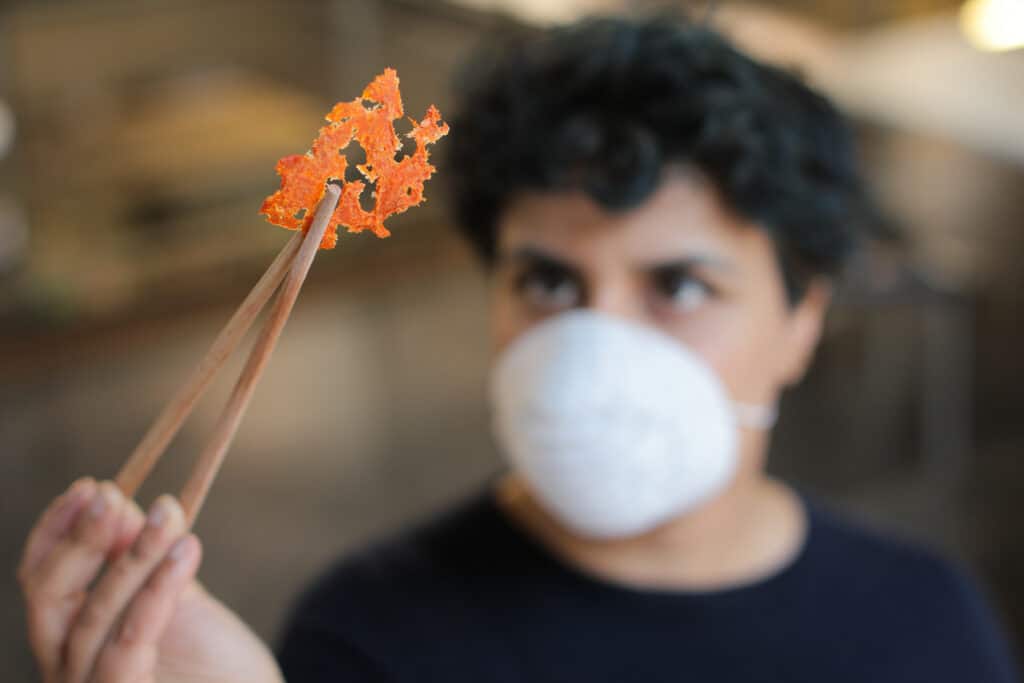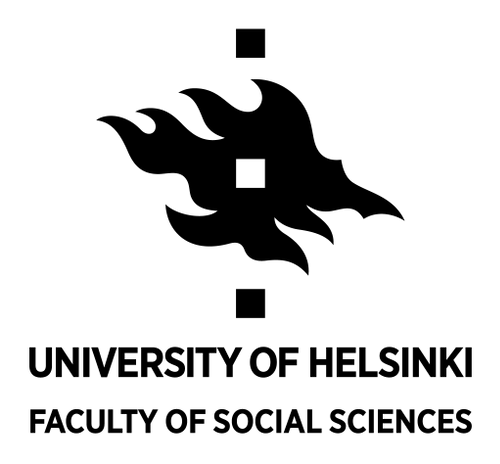By Kaajal Modi
The Microbial Spa Day was an activity organised towards the end of my first visit to CSSM in August that was prompted by a few stray ideas colliding through the course of my stay. August was a busy month, what with everyone slowly coming back from summer holidays, the cross-pollination session on Care, the discussion on Ethics and Haunting, and the fff/CSSM event. All of that plus the fact of my PhD submission meant that I knew if I were to organise something, it should be in a format that not only gave me a chance to reflect on the ideas I had been encountering, but also one that gave those ideas, and the people having them, space to breathe. As a researcher, I am interested in microbes because they comprise ecological assemblages with which humans are engaging on a daily basis through the most mundane of practices. I am always keen to get at these in ways that are hospitable and reciprocal. Until industrialisation and the advent of the germ theory of disease, it is thought that humans coexisted reciprocally with microbes, negotiating them carefully, adaptably, and in context. In our inability to see microbes, we have created (sometimes culturally or socially codified, other times entirely arbitrary) justifications for these practices. These justifications range across the scientific (pseudo- or otherwise), the spiritual, the social, and the personal. I am keen to draw out these narratives in playful and material ways, as I believe they create plural ontological modes through which to know the world, that have the capacity to enrich our understandings of how we co-exist with both human and non-human others.
There is a gorgeous sauna on the University of Helsinki campus, a sentence that is so exquisitely Finnish that I am surprised at my own initial surprise at this fact. I booked this space, which includes a meeting room and a terrace, and turned it into a ‘day spa’ on a Friday at the end of August. I invited seven CSSM researchers and staff to come and engage in discussions over a series of ‘microbial care’ activities. The discussions on Care at CSSM particularly informed my thinking about these and led to the creation of activities in which participants could engage in ‘self-care’, as well as ‘caring for’ the microbes in and on our bodies, and in our environments. This idea tugs on another strand of my research, which is framed around contemporary wellness practices and their tendency to atomise the individual and lean into binaristic purity narratives. According to the media personality and “love doctor” Emilia Vuorisalmi, being in a sauna makes us feel like we are “falling in love”. I used this prompt to invite people to reflect on questions that expanded on this idea through a framework of care, such as: as an affective mode of care, what do we think creating a loving environment for our microbes might feel like? And how might our microbes feel about it right back? Attendees were invited to check in with their human and microbial selves through a series of acts that were also acts caring for their microbial symbionts.
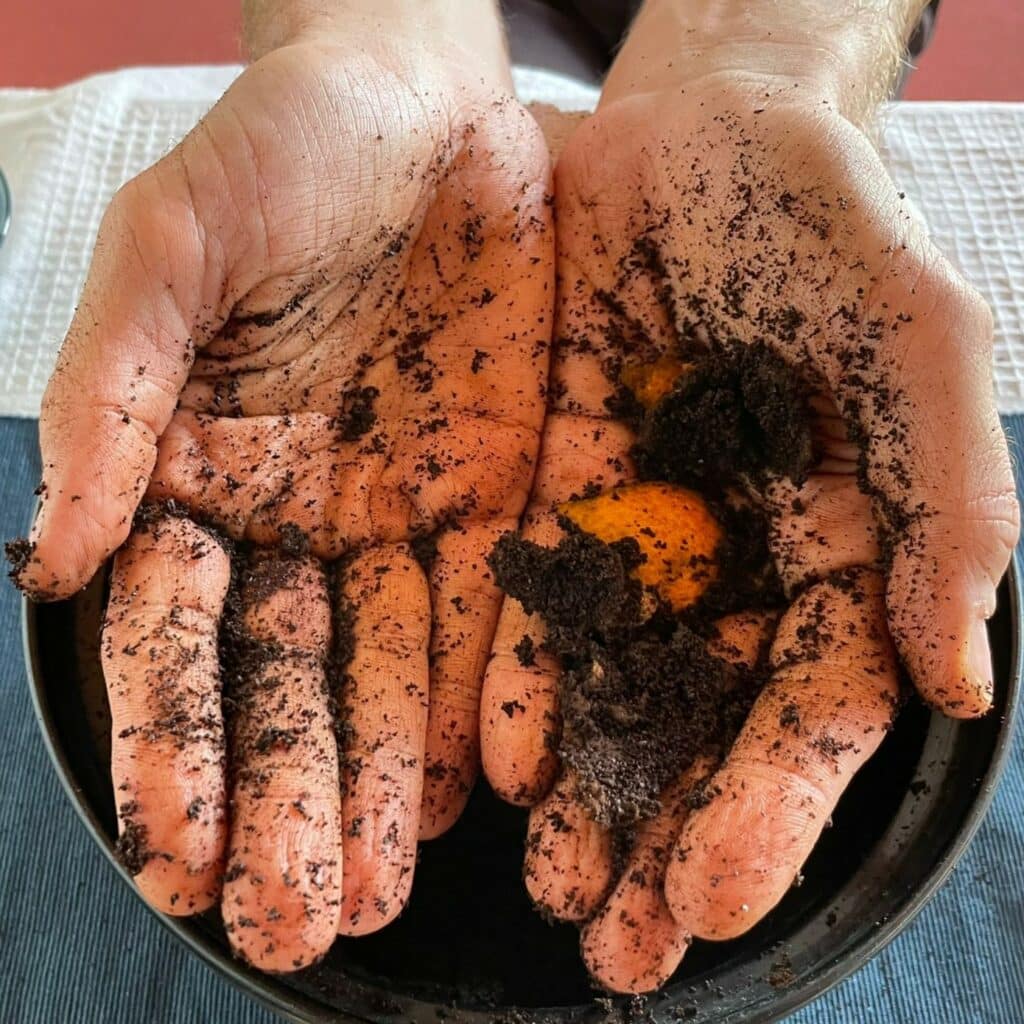
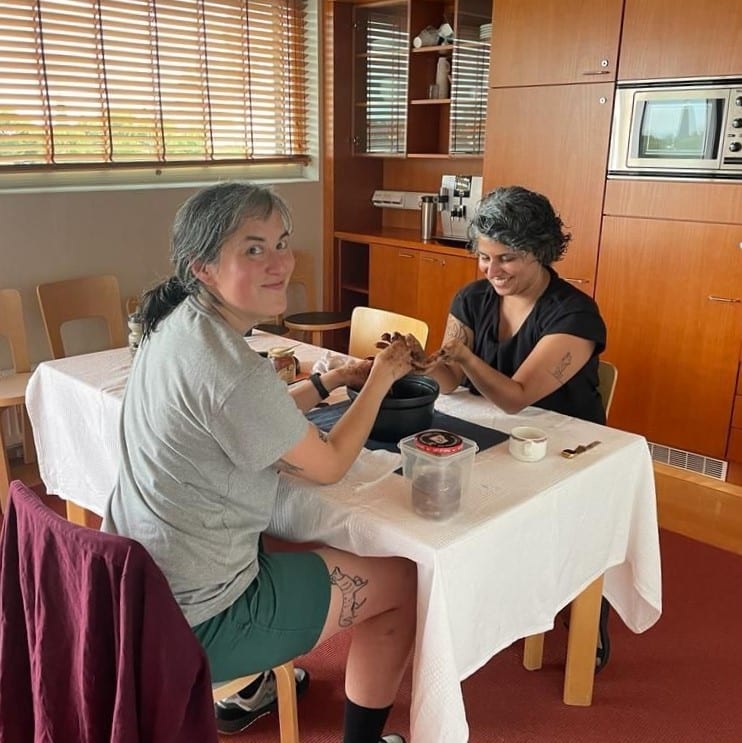
In many industrialised nations, it is estimated that the majority of us are spending 90% of our time indoors (Dunn 2019). Rob Dunn has pointed out that the built environments that we inhabit, including our homes and our workplaces, are the fastest growing biomes on earth (2019), and Rachael Wakefield-Rann argues that the specific ways in which humans inhabit the built environment creates microbiomes we do not find anywhere else (2021). Our built environment is occupied by thousands of microorganisms, including extremophile bacteria that are not found anywhere near each other elsewhere in the world, yet it deliberately excludes the microbes with which we originally co-evolved, “those that reside in soil, plants, rivers and other animals–”. We regularly clean these indoor environments with violent chemical and biological agents that, “wipe out 99% of life in targeted areas, leaving only the most resilient, battle-hardened brutes to recolonise” (Wakefield-Rann 2021, p.1). These microbiomes are in continuous interplay with our bodies, and there’s plenty of evidence to show that human environments and bodies co-constitute each other in important ways that are changing how we think about our relationship to the more-than-human (Song et al 2013; Vuong et al 2017). Within my time in Finland, I have come to love spending time in the sauna, especially when I can mix it up with dips in the Baltic Sea. It is such a wholesomely Finnish cultural practice that predates wellness culture, but that has persisted to the present day partly by mobilising these narratives. As with any such cultural practice, there are words and idioms associated with it in the language, such as jälkihiki (the feeling of sweat on your body after the sauna that means you don’t want to put on clothes), or (viedä) saunan taa(kse), to put something off (literally, take it behind the sauna), or even the idea that the sauna is a space for thoughts and feelings that cannot occur anywhere else. It is a practice that is quickly adopted and adapted to by incomers, who are welcomed into it with what I have found to be a refreshing lack of conceit. It is a space in which, like CSSM, discrete parts combine through indefinable alchemical reactions that change those who experience it in intangible yet important ways.
Another strand: during the Ethics session, CSSM bioethicist Tiia Sudenkaarne had mentioned that there is a tendency in Finland (as in many countries) in discussions of national identity to conflate bodily and moral purity in ways that frame incursions of ‘foreignness’ as a disease that is essentially destroying Finnish identity. I was intrigued by these ideas in relation to my own research, as well as discussions I had had with CSSM researchers about the history of the sauna in Finland: about how it is considered a ‘clean’ but not a ‘sterile’ space; about how it is the first structure built in any settlement, and used for important life events such as childbirth, food preservation, treating/quarantining unwell family members, and dressing the bodies of the deceased. Regular sauna use is thought to improve cardiovascular and metabolic health, and there are countless other health benefits attributed to the sauna. It seemed like the sauna, that most Finnish of built environments, was a place where ideas around microbial environments, somatic practice, bodily purity, national identity, colonialism, interspecies care and responsibility could be confronted, grappled with, and contested in fruitful ways. Other activities developed for the spa day included: a hand scrub made from used coffee grounds from around the campus that, in the process of scrubbing, inoculated the scrub to become the basis for a nukadoko bed; a nail treatment comprised of nail oil and a hibiscus vinegar (/failed kombucha) that had been fermenting in the Unioninkatu 35 kitchen; a shower gel made from the same, mixed with a ‘lactic’ personal hygiene wash; and a variety of water kefirs with which to inoculate our bodies before we went in the sauna and/or to rehydrate afterwards, that had also been made by CSSM researchers and were flavoured with fruits and herbs foraged, gleaned, and bought locally. Many of these ferments and their ingredients had come from kitchens around campus, and as such they had spent time gently bathing in the plans, hopes, research activities, and ideas of the researchers who had been engaging in microbial practices such as breathing, eating, drinking, and talking around them.
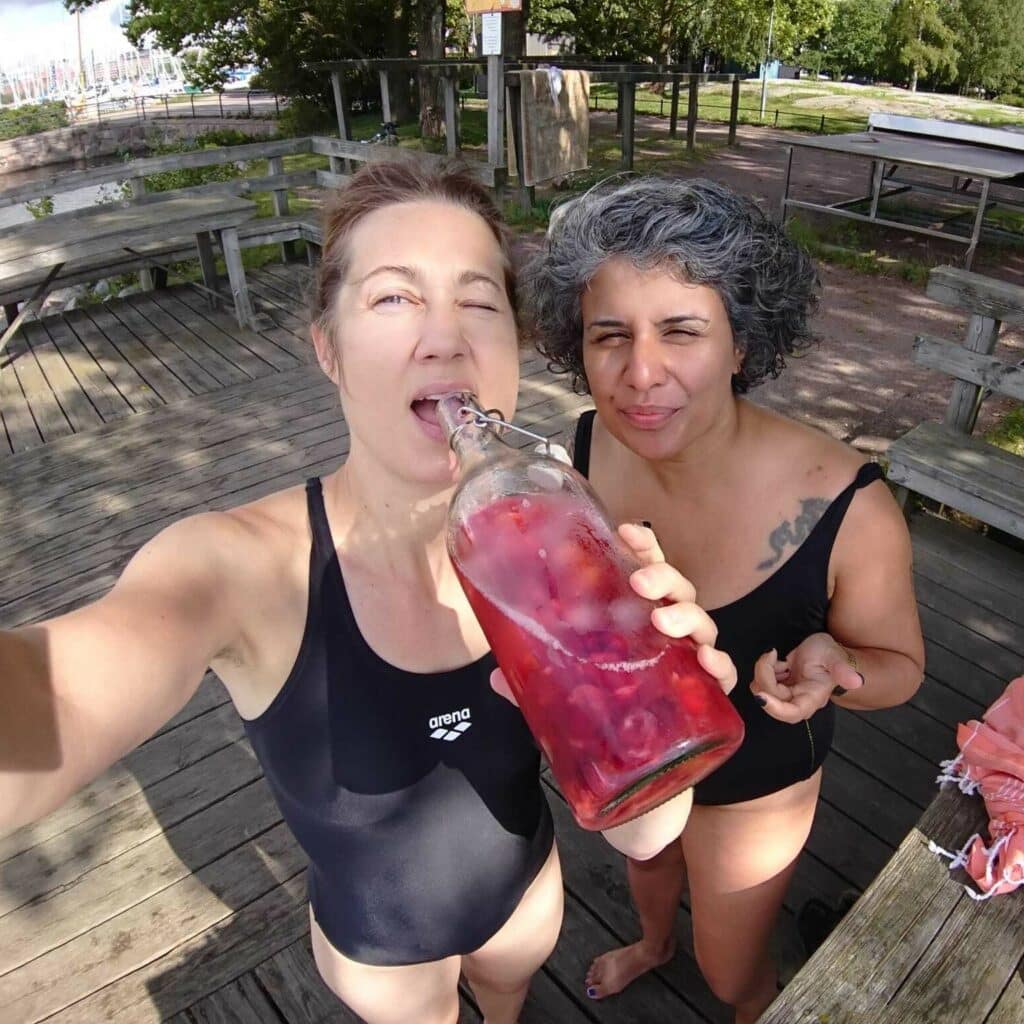

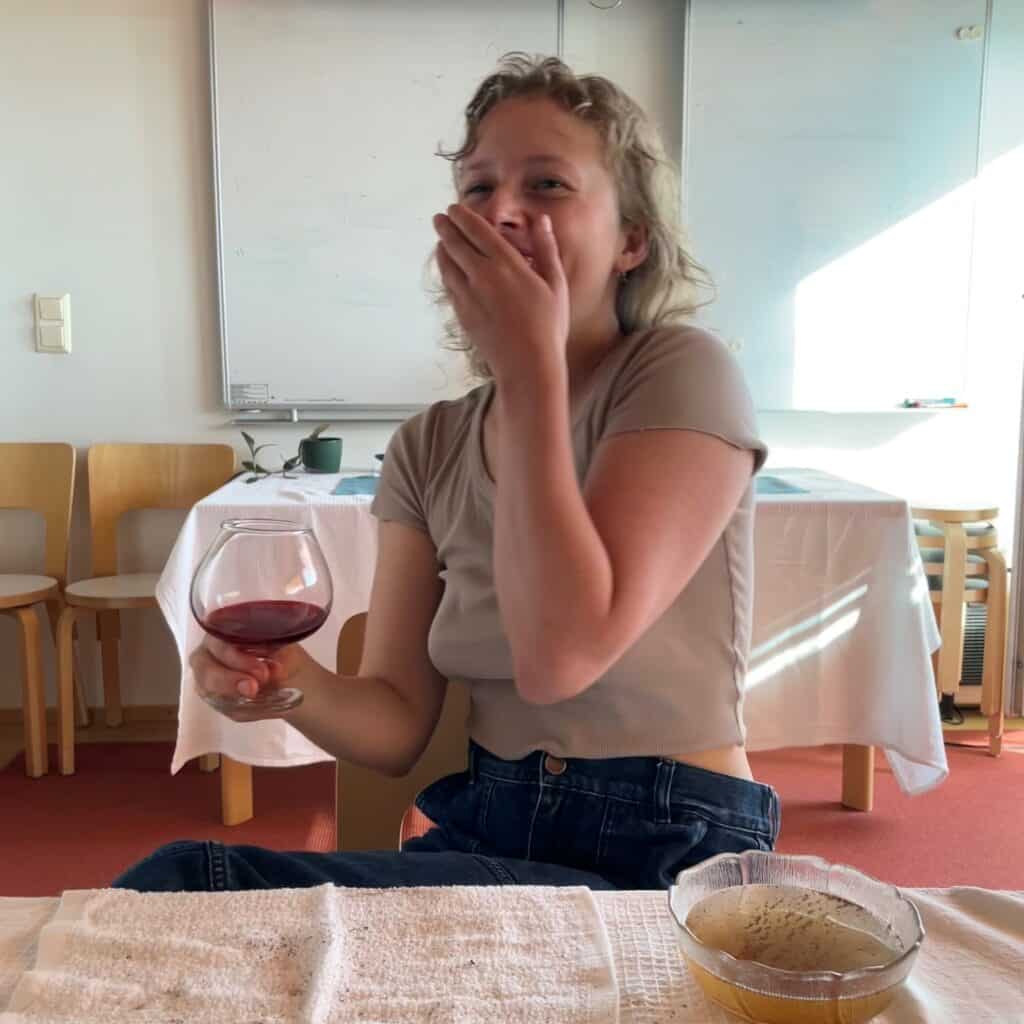
On the day I offered spa visitors some of the CSSM kefir and suggested that we could use the sauna to ‘cheat’ our way into a longer incubation period for the microbes that thrive in the warmer environments. This could be a way to speculatively ask these ‘hardy brutes’ how they might enact material and affective care for themselves, their environments, and their human symbionts. On a planet that is rapidly warming, these would be the survivors after all. The initial conversations we had were intended to explore how care, love, and other affective modes manifest in people’s practice/work/lives/research. Visitors were invited to reflect on these conversations and how they relate to the reading, thinking, and talking we had been doing in August on microbial care/haunting/ethics. The day included a swimming interlude and an impromptu tarot reading, and each ‘session’ was responsive to what felt appropriate to the discussions and possible within the time we had available. Visitors gave generously of their holobiont selves through formats including song, stories, breath and rituals, and ideas discussed covered topics as broad as: expansive understandings of our human selves (that could include the microbial-other bodies that surround us); human holobiont as body-environment amalgam; the sauna as a multispecies/microbial/probiotic space vs the sauna as a ‘clean’ space in Finnish culture; the metaphor of sauna for the national body hygienic; the importance of songs and rituals; bodies of water and air as media; the importance of finding spaces to reflect and simply be; the inherent anthropocentrism of human-microbial relations; and how we bring issues of social justice into conversation with the posthuman.
There are plans for a follow up later this month, and recordings from the day are being edited into an audio piece and listening activity that will be shared in 2024. Watch this space!
References
Dunn, R., 2018. Never Home Alone: from microbes to millipedes, camel crickets, and honeybees, the natural history of where we live. Hachette UK.
Song, S.J., Lauber, C., Costello, E.K., Lozupone, C.A., Humphrey, G., Berg-Lyons, D., Caporaso, J.G., Knights, D., Clemente, J.C., Nakielny, S. and Gordon, J.I., 2013. Cohabiting family members share microbiota with one another and with their dogs. elife, 2, p. e00458.
Vuong, H.E., Yano, J.M., Fung, T.C. and Hsiao, E.Y., 2017. The microbiome and host behavior. Annual review of neuroscience, 40, pp. 21-49.
Wakefield-Rann, R., 2021. Life indoors: How our homes are shaping our bodies and our Planet. Springer Nature.

